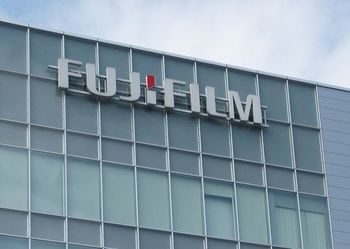
"We will be proceeding with mergers & acquisitions as strategic investments designed to accelerate profit growth," emphasized Fujifilm president & CEO Shigetaka Komori at a November 11 medium-term management briefing for Fujifilm Holdings.
According to its new management plan, Fujifilm's goal is to achieve a sales target of 2.63 trillion yen (an increase of 7.8%) and a record operating profit of 220 billion yen (an increase of 56.2%) in the three-year period from 2014 to 2016.
Specifically, of the six fields on which the company has focused, Fujifilm intends to increase its profits in healthcare, business machines, and high-performance tech components such as those used in flat-panel displays. The increase in profits Fujifilm expects from sales growth is huge, but "it is successes that cannot be perceived externally, such as cost reductions, that make these numbers possible," observes Masahiro Shibano, a securities analyst with Citigroup.
M&A funding to double
One highlight of the presentation was the 400 to 500 billion yen earmarked for mergers & acquisitions over the three-year period. Fujifilm's previous medium-term management plan allotted only 50 to 100 billion yen to M&A per a year, so this new figure represents double the precedent. The presentation additionally emphasized that M&As will be "strategic investments designed to accelerate profit growth."
So far, Fujifilm has tended to acquire businesses with the potential to contribute to corporate growth in the long term rather than the short term. For example, in 2008, it acquired Toyama Chemical, a major player in the pharmaceutical industry. Now, its drug Avigan is gathering attention as a prospective treatment for the Ebola virus, but at the time of the Toyama acquisition, investors questioned acquiring a company operating at a 8.7 billion yen loss. Even Japan Tissue Engineering—a firm that was announced would become a consolidated subsidiary of Fujifilm late last October—continues to operate in the red but was acquired for the prospects presented by its development of products used in regenerative medicine.
But how will Fujifilm find future prospects for acquisition? That questions will be weighing ever more heavily on investors' minds in the coming months.

